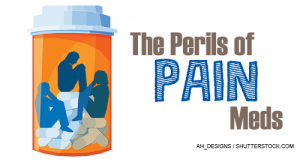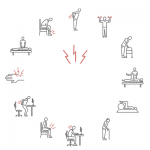 More than 10 years ago, I wrote a commentary in The Rheumatologist, called “Perils of Pain Meds,” about the over-prescribing of opioid analgesics for common causes of chronic noncancer pain, which was a major contributor to the opioid epidemic.1 Since that time, although there has been a greater than 20% decrease in opioid prescribing, the opioid-related death rate, per data from the Centers for Disease Control & Prevention (CDC), has significantly increased, driven by people with the potentially fatal disease of opioid addiction, many of whom turned to illicit heroin, often laced with deadly fentanyl or its analogs.2-6 This has occurred, in large part, when patients with chronic pain turn to these much cheaper, but deadly, opioids obtained from the streets when they are no longer able to obtain prescription opioids, which initiate opioid addiction in four out of five people addicted to heroin.5
More than 10 years ago, I wrote a commentary in The Rheumatologist, called “Perils of Pain Meds,” about the over-prescribing of opioid analgesics for common causes of chronic noncancer pain, which was a major contributor to the opioid epidemic.1 Since that time, although there has been a greater than 20% decrease in opioid prescribing, the opioid-related death rate, per data from the Centers for Disease Control & Prevention (CDC), has significantly increased, driven by people with the potentially fatal disease of opioid addiction, many of whom turned to illicit heroin, often laced with deadly fentanyl or its analogs.2-6 This has occurred, in large part, when patients with chronic pain turn to these much cheaper, but deadly, opioids obtained from the streets when they are no longer able to obtain prescription opioids, which initiate opioid addiction in four out of five people addicted to heroin.5
Additional recent statistics are sobering. In 2016, opioid-related deaths continued to rise, with more than 42,000 deaths in total—more than 17,000 due to prescription opioids, more than 15,000 due to heroin, and more than 19,000 due to synthetic opioids (mainly fentanyl and its analogs). Every day in 2016, 116 people died due to opioids. The economic costs nationally were estimated at a staggering $504 billion.7
Even before this, the rising addiction and death rates led to a key multicenter study sponsored by the National Institutes of Health (NIH) on the use of opioids for chronic noncancer pain. The researchers found insufficient evidence for long-term benefit, but definite evidence for accumulating, dose-related harm.8
According to the CDC, we are now dealing with the worst public health epidemic of modern times, created by the unethical and unscientific marketing of the opioid pharmaceutical industry for profit.
This started with OxyContin more than 20 years ago and then involved many other prescription opioids, including multiple new opioid products approved by the FDA.9 This is now complicated by heroin and fentanyl.9 The basic premise of this marketing—that opioids can be used effectively and safely with a low rate of addiction for most patients with chronic noncancer pain—has been shown to be false, but not until opioid over-prescribing led to the adverse consequences noted above. The industry is currently the subject of multiple lawsuits filed by many state attorneys general, as well as by a number of cities and counties in the U.S.10
Opioids are unique among pain medications in that they act directly on the brain, attaching to opioid receptors that modulate many CNS functions, including the affective component of pain, pleasure and reward, and the sleep center of the brain stem, which controls respiration during sleep.11,12 This accounts for the lethargy, sedation and depression of breathing during sleep, which is responsible for the many overdose victims who have died while they slept.
Recommendations
Although indicated for acute pain, post-surgical pain and chronic pain associated with cancer and end of life, as I stated in my original article, opioids are indicated only for a select minority of patients with rheumatic causes of chronic noncancer pain, such as carefully selected and monitored patients with end-stage arthritis in the absence of other options.

